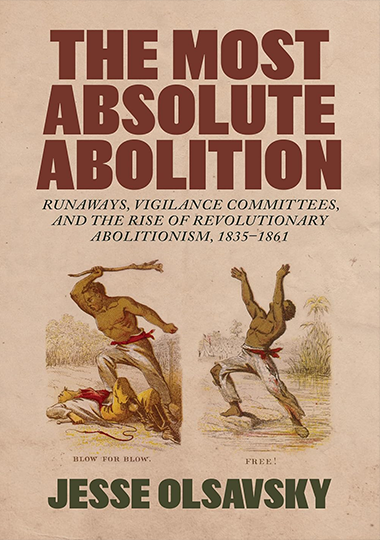
By Jesse Olsavsky
In this carefully researched narrative history author Jesse Osalvsky has brought into focus the names and the lives of runaway slaves. They were escaping the ‘prison house’ of the Southern plantations of the United States. It’s a particularly interesting read as it’s written by and with those who escaped enslavement in pre-Civil War America.
Osalvsky also looks at those who worked with slaves within Vigilance Committees. They listened to and recorded their stories and guided escaped slaves on their dangerous passage to safety away from the reach of slavecatchers on the Underground Railroad.
There was much debate about the methodology of conducting interviews which became ‘an interchange of thought between slaves and interviewers’. Critically, it was understood that runaways drove the narrative, with support from those who listened and recorded their experiences.
Several went on to write their own autobiographies, such as fugitive Harriet Jacobs. In Incidents in the Life of a Slave Girl, Harriet wrote about her traumatic experiences. She would become a major figure in the abolitionist movement.
Danger was around every corner for the escaped slaves—they were surrounded by heavy surveillance.
Organisations such as the Richmond committee for the Prevention of Absconding and Abducting of Slaves offered considerable rewards for captured fugitives. It was what scholars describe as a “carceral landscape” and has a direct link to the present disproportionate number of black people in US jails. It is shocking to learn that those who absconded were described as stealing themselves. The slave was merely a machine who worked harder for a ‘Master’.
Women, as philosopher and activist Angela Davis has explained, were classified as ‘breeders’ not mothers. They could therefore have their children ‘sold away from them like calves and cows.’
Former slave Lewis Clarke in his autobiography estimated that some £60 million was robbed from slaves each year. Runaways knew that the capitalist system and the wealth it produced was built on their brutal exploitation.
Reading this history is an immersive experience. There are five chapters that show how the Vigilance Committees helped fugitives from 1835 to 1861 when the Civil War began.
This includes details from individual stories. So I learned that the origins of the committees which were rooted in black resistance and how they operated. Olsavsky examines, for example, how the committees overcame sectarian divides in the 1840s to focus on bringing runaways into the abolitionist movement.
The chapter The Pedagogy of Radical Abolitionism shows how the Vigilance Committee networks assisted in bringing the ideas of Frederick Douglass and William Wells Brown to publication.
Runaways were writing about how to “overthrow society”.
The collaboration between fugitives and Vigilance Committee members created a radicalised body of work that was critical of the American slave economy.
The development of revolutionary ideas about religion, feminism, anti-racism, prison abolition, novel writing, transcendentalism and music is explored in considerable depth. It’s interrogated in a chapter entitled All Shall be Thrown Down, which for me demonstrates the possibilities of resistance to the slaveholders by any means necessary. The echoes are felt in the modern day United States and elsewhere, including here in Britain. For instance, the influence struggle against slavery can be felt through the Black Lives Matter movement and the Civil Rights struggles that have preceded it.
Olsavsky’s impressive research draws out differences between abolitionists—who advocated for no further extension to slavery—and those who campaigned for it to be ended immediately. He also shows that where there were differences of philosophy they did not necessarily interfere with the collaboration between the Vigilance Committee networks and the Underground Railroad.
The Vigilance Committees worked with anti-slavery societies. But they went further in advocating armed self-defence and insurrection against the slaveholders. One notable occasion is the raid on Harper’s Ferry in 1859 led by John Brown, a revolutionary act which was a contributory factor to the American Civil War.
It’s clearly a highly researched narrative that sheds light on the actions and activity of creative individuals, both women and men. Their courage clearly influenced the struggle against the “prison house” of slavery.
Yet paradoxically they have been sidelined by the powers who benefit from those who continue to exploit labour in the pursuit of profit in the contemporary world. That is why The Most Absolute Abolition is an invaluable resource for understanding the history of revolutionary struggle.




